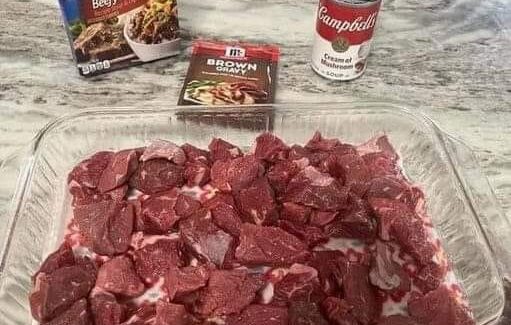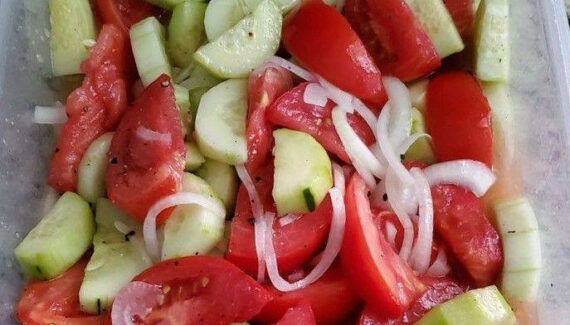Cleaning Your Oven Racks — Right Now
Nothing brightens up an oven faster than shiny, grease-free racks. This guide gives you safe, practical, step-by-step methods (from gentle to heavy-duty), plus troubleshooting and maintenance so your racks stay cleaner longer. No timers or hard deadlines — follow each step and check progress visually.
Quick overview — why clean oven racks?
- Removes burned-on grease that smokes and smells.
- Improves heat circulation and cooking performance.
- Protects the oven interior and prevents flare-ups.
What you’ll need
- Rubber gloves and safety glasses (for strong cleaners).
- Large tub, basin, or a space where racks can lie flat.
- Dish soap (degreasing type) and very hot water (as hot as is safe to handle).
- Baking soda, white vinegar (household).
- A non-abrasive scrubbing pad or nylon brush; small toothbrush for corners.
- Plastic scraper or a plastic putty knife (avoid metal on coated racks).
- Optional: commercial oven cleaner (read label), fine-grade steel wool (only for bare metal racks), old towels or newspapers for protection.
Safety first
- Never mix chemical cleaners (e.g., oven cleaner + bleach or ammonia). That can produce dangerous fumes.
- Use gloves and eye protection with commercial cleaners, and ventilate the room.
- Check your rack type: porcelain-coated and enamel racks scratch easily — avoid harsh abrasives on those.
Method A — Soak & Scrub (gentle, great for light–medium grime)
- Remove the racks and set them on an old towel or newspaper outside the oven or in a large tub/sink.
- Fill the tub or sink with hot water and a generous squirt of dish soap so the surface of the racks is submerged.
- Press the racks down so grime is soaked; let them remain until the grime has softened enough that a sponge scrubs it away easily (periodically test a spot).
- Use a nylon brush or non-abrasive pad to scrub along the bars and corners. A toothbrush helps with tight spots.
- Rinse with clean water, dry thoroughly with a towel, and slide back into the oven.
Why this works: hot, soapy water loosens grease and carbon so scrubbing removes it without damaging finishes.
Method B — Baking Soda + Vinegar (eco and very effective)
- Remove racks and place them on newspaper or in a tub.
- Sprinkle baking soda generously across the greasy areas; for thick grime make a paste of baking soda + a little water and spread it on the worst spots.
- Spray or pour white vinegar over the baking soda. The fizzing reaction helps lift burnt grease.
- Allow the fizz and paste to work until the paste scrapes away with little resistance (check periodically).
- Scrub with a nylon brush or non-abrasive pad. Use a plastic scraper for stubborn patches.
- Rinse thoroughly and dry.
Notes: This method is very friendly to finishes and doesn’t use strong chemicals, yet is strong on cooked-on messes.
Method C — Heavy-Duty Cleaner (for extreme baked-on grease)
- Read the product label fully and wear gloves and eye protection. Open windows and ventilate.
- Apply the cleaner following the manufacturer’s directions (do not mix cleaners).
- After the cleaner has done its work as directed, move the racks to a tub or sink and wash off all residues with lots of water and dish soap.
- Rinse and dry completely before replacing.
Warning: commercial oven cleaners are powerful and can damage coatings if misused — test on a small area if unsure.
Method D — Dishwasher (if racks fit and are dishwasher-safe)
- Check the oven manual — some racks are dishwasher-safe, others (especially larger or coated ones) are not.
- Place racks in the dishwasher if they fit; run on the heaviest wash cycle.
- After the cycle, rinse any residue and dry.
Note: Not all ovens/racks tolerate dishwasher detergents and heat — use this only when you’re sure they’re compatible.
Troubleshooting & special cases
- Stubborn black carbon: Gently use a plastic scraper after soaking or the baking soda paste method. For bare metal only, fine-grade steel wool can be used carefully.
- Rust spots: Soak in white vinegar, scrub gently with a nylon pad, then rinse and dry. If rust is extensive, consider replacing racks.
- Porcelain/enamel coating chips: Stop scrubbing with abrasives — protect remaining coating and consider replacing racks if interior is exposed.
- Food that’s melted/sugary: These become glaze-like. Use warm soapy soak to soften, then plastic scraper; avoid high-pressure scraping that damages coating.
Drying & putting racks back
- Make sure racks are completely dry before sliding back in — moisture encourages rust.
- Reinsert along the rails carefully and ensure they seat evenly so items won’t tip.
Maintenance tips to keep them clean longer
- Wipe up spills from racks as soon as they cool — small spills are easy to remove.
- Use a baking tray or foil-lined pan under messy dishes to catch drips (don’t cover oven bottoms with foil).
- Do a light wipe-down after every few uses so heavy builds don’t form.
- If your oven has a self-clean cycle, remove racks first unless the manual explicitly allows them to stay in — the high heat can damage some rack finishes.
Final notes
Pick the method that matches how dirty your racks are and what finish they have. For most people, the baking soda + vinegar route is the best balance of safety and power; soak-and-scrub works great for routine upkeep; reserve commercial cleaners for genuinely stubborn grease and use them with caution.
If you want, tell me what type of racks your oven has (porcelain/enamel, chrome, stainless) and what kind of grime you’re dealing with — I’ll give a tailored step-by-step plan for those exact conditions.
Cleaning Your Oven Racks — Right Now
Nothing brightens up an oven faster than shiny, grease-free racks. This guide gives you safe, practical, step-by-step methods (from gentle to heavy-duty), plus troubleshooting and maintenance so your racks stay cleaner longer. No timers or hard deadlines — follow each step and check progress visually.
Quick overview — why clean oven racks?
- Removes burned-on grease that smokes and smells.
- Improves heat circulation and cooking performance.
- Protects the oven interior and prevents flare-ups.
What you’ll need
- Rubber gloves and safety glasses (for strong cleaners).
- Large tub, basin, or a space where racks can lie flat.
- Dish soap (degreasing type) and very hot water (as hot as is safe to handle).
- Baking soda, white vinegar (household).
- A non-abrasive scrubbing pad or nylon brush; small toothbrush for corners.
- Plastic scraper or a plastic putty knife (avoid metal on coated racks).
- Optional: commercial oven cleaner (read label), fine-grade steel wool (only for bare metal racks), old towels or newspapers for protection.
Safety first
- Never mix chemical cleaners (e.g., oven cleaner + bleach or ammonia). That can produce dangerous fumes.
- Use gloves and eye protection with commercial cleaners, and ventilate the room.
- Check your rack type: porcelain-coated and enamel racks scratch easily — avoid harsh abrasives on those.
Method A — Soak & Scrub (gentle, great for light–medium grime)
- Remove the racks and set them on an old towel or newspaper outside the oven or in a large tub/sink.
- Fill the tub or sink with hot water and a generous squirt of dish soap so the surface of the racks is submerged.
- Press the racks down so grime is soaked; let them remain until the grime has softened enough that a sponge scrubs it away easily (periodically test a spot).
- Use a nylon brush or non-abrasive pad to scrub along the bars and corners. A toothbrush helps with tight spots.
- Rinse with clean water, dry thoroughly with a towel, and slide back into the oven.
Why this works: hot, soapy water loosens grease and carbon so scrubbing removes it without damaging finishes.
Method B — Baking Soda + Vinegar (eco and very effective)
- Remove racks and place them on newspaper or in a tub.
- Sprinkle baking soda generously across the greasy areas; for thick grime make a paste of baking soda + a little water and spread it on the worst spots.
- Spray or pour white vinegar over the baking soda. The fizzing reaction helps lift burnt grease.
- Allow the fizz and paste to work until the paste scrapes away with little resistance (check periodically).
- Scrub with a nylon brush or non-abrasive pad. Use a plastic scraper for stubborn patches.
- Rinse thoroughly and dry.
Notes: This method is very friendly to finishes and doesn’t use strong chemicals, yet is strong on cooked-on messes.









No Responses Yet